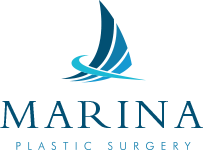Rib anomalies often go unnoticed until you are subjected to an X-ray or CT scan. Therefore, most rib anomalies need not be corrected unless it impedes your normal physical activities.
This is usually caused by a failure to achieve synchondrosis.
At Marina Plastic Surgery, our chest surgeons hold your privacy in the highest regard. We offer high-quality services discreetly with results aimed at improving your self-confidence and self-esteem.
Overview
Rib anomalies may take form in many ways. Here are examples of rib anomalies:
- Extra (supernumerary) ribs
- Missing ribs (agenesis of ribs)
- Fused ribs
- Ribs with abnormal length or shape.
- Ribs that constrict the internal organs causing shortness of breath
For most rib anomalies, as long as it doesn’t have any negative implications for the individual’s health, further treatment is no longer needed. It is only when it has a negative impact that correcting it is needed.
At Marina Plastic Surgery, we’ve dealt with different types of rib anomalies and we have a long list of successful treatments and operations. The majority of our patients have provided us with positive statements and testimonials regarding the results of their chest operation. This is a testament to our high level of expertise combined with skills.
Best Candidates
Males with good general health and as close as possible to their ideal BMI based on age, height and other physical factors.
Younger candidates show better results.
What to Expect
An initial consultation will be done to assess what you essentially need for functionality with a secondary assessment by our chest surgeon done for the aesthetic purpose of the operation.
Treatment is highly dependent on the type of rib anomaly you have. For patients with less severe cases or those not suffering from any other complication due to having a rib anomaly, physical therapy to strengthen the chest muscles and improve posture may be advised.
More severe cases may require non-invasive or mildly invasive surgery with positive results expected.
After Surgery / Recovery
As with all types of surgical procedures, caring for the areas where sutures were made is the highest priority. Following your chest surgeon’s instruction for the proper care of affected areas is highly advised.
Pain management can be administered by hospital staff or by the patient. It can be oral or through intravenous methods.
Physical therapy will be introduced gradually for muscle strengthening and fortifying the areas operated on.
Bar removal (if a bar was installed will be removed after healing recovery within the operated area is at a satisfactory level.)
Procedure Planner
Initial Meeting
45 – 60 minutes
Pre-op
30 – 60 minutes
Procedure Time
2 – 6 hours depending on the technique used
Recovery Time
2 – 8 weeks
Post-op Follow Up
1 week
